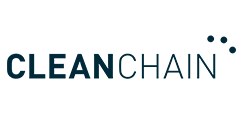Key COP27 Takeaways for the Apparel Industry
Article
Textiles still have a huge part to play in reducing carbon emissions as the second most polluting industry in the world behind the oil and gas industry.
But because the industry is the second worst polluter, if it makes the effort, it has the potential to make a significant difference in global emissions with new innovations and smart thinking as discussed at COP27.
Way back in 1857, American-born Eunice Newton Foote was the first scientist to conclude that rising CO2 levels could change atmospheric temperatures. Fast forward 160+ years, and we find ourselves on the receiving end of her findings. The latest United Nations figures place the Earth on track for an average rise in temperature of 2.8 degrees Celsius this century, leaving all of us and most species on the planet with catastrophic consequences.
It’s not looking good for the textile industry
The textile and apparel industry continues to produce massive amounts of carbon emissions and wastewater, mainly upstream during the supply chain’s processing and manufacturing (scope 3) stages. When we consider the opposite end of the supply chain – its consumption – the fast-fashion trend also results in terrible environmental consequences. In the UK alone, each household’s clothing consumption produces the equivalent emissions of driving a modern car for 6,000 miles (9,656 km).
No more time for inaction
We have reached a point where we are all responsible for how we consume the resources around us. Previous pledges now need action, and many people and organizations are on their way to making more sustainable choices, regardless of how great the measures are to launch these sustainability transformations.
How can we speed up change? By enforcing through local and global regulations. Some new legislation, rules and standards are expected to come into play soon, impacting future operations and supply chains. However, many people think this has already taken too long and that stricter measures must be taken immediately. The difficulty comes in achieving a level playing field for this to work internationally. The chair of the Frankfurt-based International Sustainability Standards Board (ISSB), Emmanuel Faber, is currently looking to define a global baseline for carbon emissions disclosures and to make as many countries as possible adopt it.
New initiatives to foster change
Global Fashion Agenda, in partnership with United Nations Environment Programme (UNEP), made an announcement at the conference about the launch of The Fashion Industry Target Consultation, a multistakeholder project focused on working toward a net-positive industry and forming new goals that are currently being overlooked, such as purchasing practices and circular design. The main target is to establish a clear path toward a net-positive fashion industry.
Other initiatives, such as the United Nations Fashion Industry Charter for Climate Action, are also trying to curb CO2 emissions by making it mandatory for their 130-plus signatories to report their greenhouse gas emissions annually. The Fashion Charter was launched in 2018 with an international industry mission statement in which fashion and textile companies commit to achieving net-zero emissions by 2050 and address their roles in climate change. 89 percent of companies submitted data this year, with those that failed to comply, facing removal as signatories. It is clear that while strides forward have been made, more needs to be done as a report by Stand.Earth shows. This report looked at the progress of 10 major brands (all Fashion Charter signatories) and found that only Levi’s was on course to cut greenhouse gas emissions by 55 percent by 2030.

Source: World Meteorological Organization (WMO) – United in Science 2022
Responsible sourcing steals the show
The call for responsible sourcing and innovative, sustainable fabrics was heard loud and clear at this year’s COP27 conference. Fashion leaders Stella McCartney and Kering both pledged to source low-carbon fibers to reduce their environmental impacts on endangered forests. Kering, H&M and Inditex (parent company to fashion brand Zara) also vowed to purchase over half a million tonnes of low-carbon, low-footprint alternative fibers for fashion textiles and paper packaging.
According to Reuters, eco-friendly fiber comes from waste textiles and agricultural residues instead of forest fibers, including a fast-growing renewable bamboo fiber that has minimal environmental impact. The announcement from the fashion giants above will help to unlock the funds for 10-20 low-footprint pulp mills to produce these sustainable fibers, with every ton of clothing produced with alternative fibers saving between 4-15 tons of carbon.
These take-aways from COP27 will certainly be difficult to swallow for many brands and suppliers. But you are not alone. ADEC Innovations has designed the CleanChain software to help make improvements in textile sustainability with a few clicks. In that way, you can quickly create a doable plan for transforming your brand or supply chain for the better.
Clean up your supply chain and demonstrate progress toward your brand’s environmental commitments.
Stand out as a sustainable supplier and help your brand clients get more insights into their supply chain’s environmental performance through responsible sourcing.






